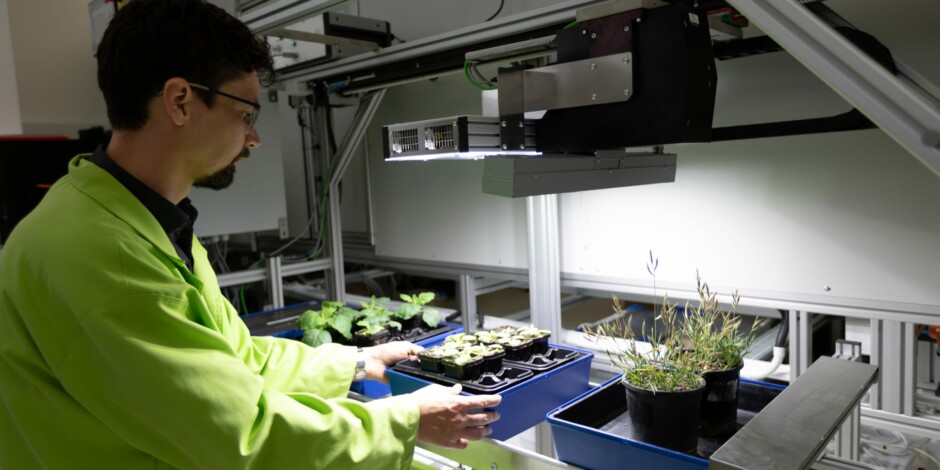Industry and research join forces to tackle complex agricultural challenges
Imagine an innovation system where universities are encouraged to step outside traditional discipline-specific boundaries, and throw the full might of their research and technology at our agricultural challenges? That’s a future, the Australian National University’s (ANU) Centre for Entrepreneurial Agri-Technology (CEAT) is embracing.

Australia’s innovation ecosystem is maturing at a rapid pace, delivering agrifood research and technologies that are transforming food, fibre, and fuel production.
But like innovation ecosystems across the globe, a cultural challenge between Australia’s research and industry communities is holding us back. And it’s that challenge which the Australian National University’s (ANU) Centre for Entrepreneurial Agri-Technology (CEAT) is tackling head-on, by tweaking the way industry and researchers engage.
Established in 2018 as a joint initiative between the ANU and CSIRO, with kickstart funding from the ACT Government, CEAT is on a mission to improve the way researchers and industry interact, and in doing so, deliver better solutions to complex agricultural challenges.
CEAT Director, Professor Owen Atkin, explained, “Often what will happen is that a researcher makes a discovery and thinks to themselves, ‘There must be an application for this discovery.’
Then on the other side, you have industry self-identifying a problem and looking for a [pre-determined] solution. And consequently, things don’t always match up.”

RELATED: Collaboration and innovation to address climate change with Peter Wren-Hilton
CEAT’s solution is an innovation model based on the co-definition of problems, and co-design of solutions. “Our model requires both the industry player and the researcher to be open-minded; to talk openly about an industry’s pain points, and a researcher’s capability, and see where the two could align.That’s how we achieve the high value relationships needed to deliver innovative solutions to complex problems.”
In its short history, CEAT’s focus has evolved from agritechnology to encompass broader agrifood challenges, partnering with state governments, Landcare, and Rural Research & Development Corporations (RDCs), including Australian Pork Limited, Meat & Livestock Australia, and AgriFutures Australia, on a range of projects that deliver a new way of looking at issues – and richer solutions.
RELATED: Space technology, a powerful tool for Australian farmers
One is FutureSoils, a National Landcare Program project co-designed with NSW Department of Primary Industries, farming systems groups and ANU computer science researchers to address acidification and soil organic carbon decline – an issue which affects more than 50 per cent of farming soils in southern and central NSW.
The high-value project takes decades of historical soil data (from government, researchers, and producers) and integrates it with machine learning processes from the Australian National University’s computer science group to deliver predictive modelling and analytics that support improved farm decision-making.
“Co-definition really mattered here,” explained CEAT Senior Fellow, Martin Amidy.
“When we first came in, stakeholders wanted us to develop a new app. But when we dug a bit deeper, we realised producers already had plenty of apps they used. So instead of adding another new app to a crowded market, maybe we just needed an interface to link a back-of-house data analytics solution to existing apps.”
By tapping into products that producers already use, it’s likely that the uptake – and impact – of the solution developed through the collaboration will be much greater.
RELATED: Data interoperability and the digital revolution of agriculture
With research and industry experience, CEAT is an ideal facilitator
To agricultural problem-owners, engaging a university can seem a daunting task. Martin understands that, having spent over 20 years working for industry in research management and adoption. “The ANU is huge: $1.5 billion in annual turnover and over 4,000 staff across different schools, centres, and institutes. Anyone from the outside trying to penetrate the organisation might not know where to start,” he explained. “CEAT simplifies the process, acting as interface for industry to come in, in a painless way and access our talent and capability.”
Beyond a one-stop ‘shopfront,’ CEAT plays a key role as a translator, to understand and align the drivers and capabilities of researchers with industry need. “With [collective decades of] experience working in [and with] industry, we can translate what the needs are on the producer side of the equation into something researcher can engage with and vice versa,” added Martin.
“This translator role reduces communication barriers by helping stakeholders to understand the full potential of collaboration and ensures we identify what everyone wants out of the process. And if we don’t have the capability to deliver within the ANU, we’ll bring in partners who do.”
RELATED: CSIRO deep tech support programs drive research to market
An unexpected, but world-class, agrifood innovator
The ANU, based in Canberra, is renowned for its world-class research in social sciences, policy and government and less so for its association with the agricultural sector. However, the ANU does have expertise in key areas associated with agriculture, such as plant science, biodiversity and conservation, data analytics, computer vision, and renewables.
“These are things that can really drive an ag innovation ecosystem,” explained Martin. “But like other universities, we tend to have [discipline-specific] ‘silos’ that separate our capability. The idea of CEAT is that we break down those silos, to combine our expertise across disciplines to solve particularly challenging issues in a systemic way.”
He continued, “I think the fact we’re not a traditional agricultural university is an advantage. It means we apply a different lens over a challenge and bring innovative ways of addressing it. And because we don’t necessarily have the application background, we value (and rely on) ongoing consultation with industry – so that we can really understand and respond to producer/industry needs.”
RELATED: Connectivity solutions help drive business on remote WA cattle station
For a small, agile organisation, consultation can be a costly exercise. To overcome that, CEAT taps into existing industry networks and consultation channels where they can, like the Southern Australia Livestock Research Council (SALRC) – of whom CEAT is a member.
“We try to add value to existing process, rather than add to producers’ consultation fatigue with new ones,” explained Martin. “But the other thing we’re doing to add value for industry is mapping our research capability, so we can target conversations to areas of identified need.”
CEAT’s co-design model is an approach that Martin hopes is picked up across the university sector more broadly. “Because the reality is, pressures from climate change, geopolitics and globalisation mean our challenges will be very different in the future, and to solve them, we’ll need different ways of thinking and different approaches to problem solving.”
Got an interesting challenge you’d like CEAT to help solve? Contact the team here.
The Australian National University’s (ANU) Centre for Entrepreneurial Agri-Technology (CEAT) is a Strategic Partner for the AgriFutures evokeAG. 2023 Down to Earth event, don’t miss the chance to connect with the team on 21-22 February 2023 in Adelaide, South Australia.
Bringing together the best and brightest together to talk about how innovation and technology collide, intersect, connect, translate, complement, and challenge our most important assets – our people, our farms, our soil, our water, and our Earth. Tickets are on sale here.
View the full two-day program, including all speakers and partners involved in evokeAG. 2023.
